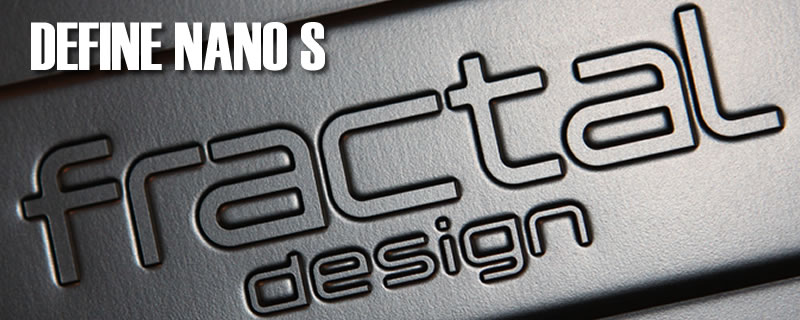Fractal Define Nano S ITX Case Review
Conclusion
If you’ve read the whole review and watched the Video you’ll know by now how we feel about the Fractal Design Define Nano S. Â Basically it’s a nice little case but it could have been so much better. Â On the plus side it’s pretty compact, measuring just 330x203x400mm (HxWxD), it’s not going to take up a lot of space on the desk beside you. Â It’s available with or without a window for those that prefer silence or their goods on show, and even if you go for the windowed option we have on test today, it’s nice to know that the opposite case side panel, along with the front and the roof are still lined with noise and vibration dampening materials. Â The outside of the case has a front finished in what looks very much like brushed Aluminium, but is in fact plastic, with the majority of the rest of the case being Steel, the exceptions being the front panel, fan filters and Moduvent roof panel (don’t worry, we’ve ranted enough about this). Â On the inside there’s room for a CPU cooler up to 160mm and a PSU of the same length. Â GPU wise you’re looking at a maximum of 315mm which although not mahoosive should be plenty. Â From a storage perspective round the front the Nano S has a bracket on the floor for a 3.5″ drive, while round the back of the motherboard tray there are stealth mounts for a brace of 2.5″ drives and an additional 3.5″ drive. Â Ventilation is well sorted with the Nano S having a GP14 in the front and a GP12 in the back. Â Add to this the ability to take up to 2x140mm fans in the front and 2x140mm units in the roof as well as a 120mm fan in the base and we think you’ll agree that air cooling wants for nothing. Â Cable management is also respectable, with well spaced gommeted holes. Â There’s also plenty of cable tie points and included cable ties should the fitted Fractal logo’d hook and loop type fastenings not suffice.
If by now you’re getting the feeling that we’re singing the Nano S’s praises because we’re about to pull the rug out from under it, you might be on the right track. Â Pulling the rug might be a bit harsh though as it’s not actually such a bad case, in fact it’s quite good. Â The problem is that for the want of a few simple changes it could have been so much better. Â Aside from a few niggles regarding the maximum length of PSU the Nano S can accept (140mm fits a hell of a lot better than the 160mm Fractal quote) The main issue we have is with the amount of room given over to water cooling in the roof of the case. Â Fractal claim that there’s room up there for either a 240mm or a 280mm rad, with the caveat that nothing extends from the motherboard by more than 35mm in the critical area towards the top of the motherboard. Â In itself that doesn’t seem too unreasonable. even if the allowance is a very small one, the issue we have is that so many ITX motherboards do have hardware that will foul the rads, or, as we found with our test board they have the 24pin socket at the top, which in itself negates the ability to mount a rad, or for that matter a fan up there. Â The biggest problem though is that Fractal appear to have made a conscious decision to exclude compatibility with the Asus Maximus VI Imapact, which as you know has a projecting daughter board at the top edge. Â We say conscious decision, as Fractal were aware of the conflict but chose not to design the case so as to accommodate the board. Â All it would have taken was another few millimeters and the board would have fitted. Â Why is this such a big deal when the case will take decent rads in the front? Â Well for starters there are quite a few GPUs with inbuilt AIOs on the market now that would combine nicely with a CPU AIO to make a compact little power house of a PC. Â Sadly there are so many variables involved in fitting a rad into the roof that we can’t wholeheartedly say that we give this option our support. Â We’re not saying it can’t be done, just that it’s fraught with the potential for disaster, and by disaster we mean spending a wallet lightening load of cash on kit that you then find doesn’t quite fit.
Is it “A new Way to look at the ITX form Factor”? Â Not sure to be honest, but we do wish they’d looked at it a bit harder
Because it’s not a bad case, it still gets a Silver, had it been just that little bit bigger, and we mean a few millimeters, and so not given the issues we noticed then it would have got a well deserved Gold. Tom and I differ on our thoughts of the award deserved for the Nano, Ive listened to his points and think that the tiny change required would have made a huge difference which at the end of the day makes this case less compatible than cases from other manufacturers that are cheaper
You can discuss your thoughts on the Fractal Define Nano S ITX Case Review in the OC3D Forums.




